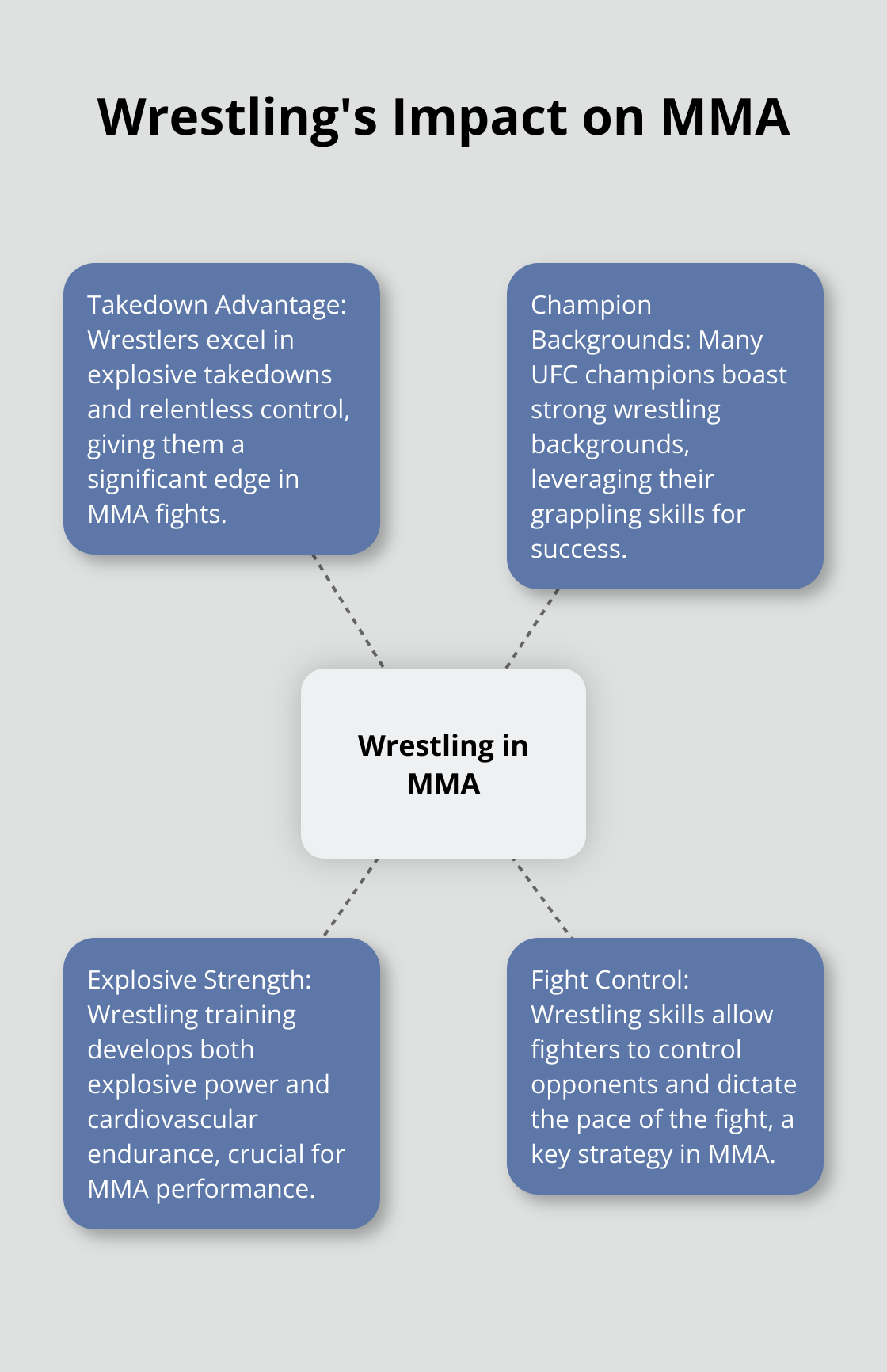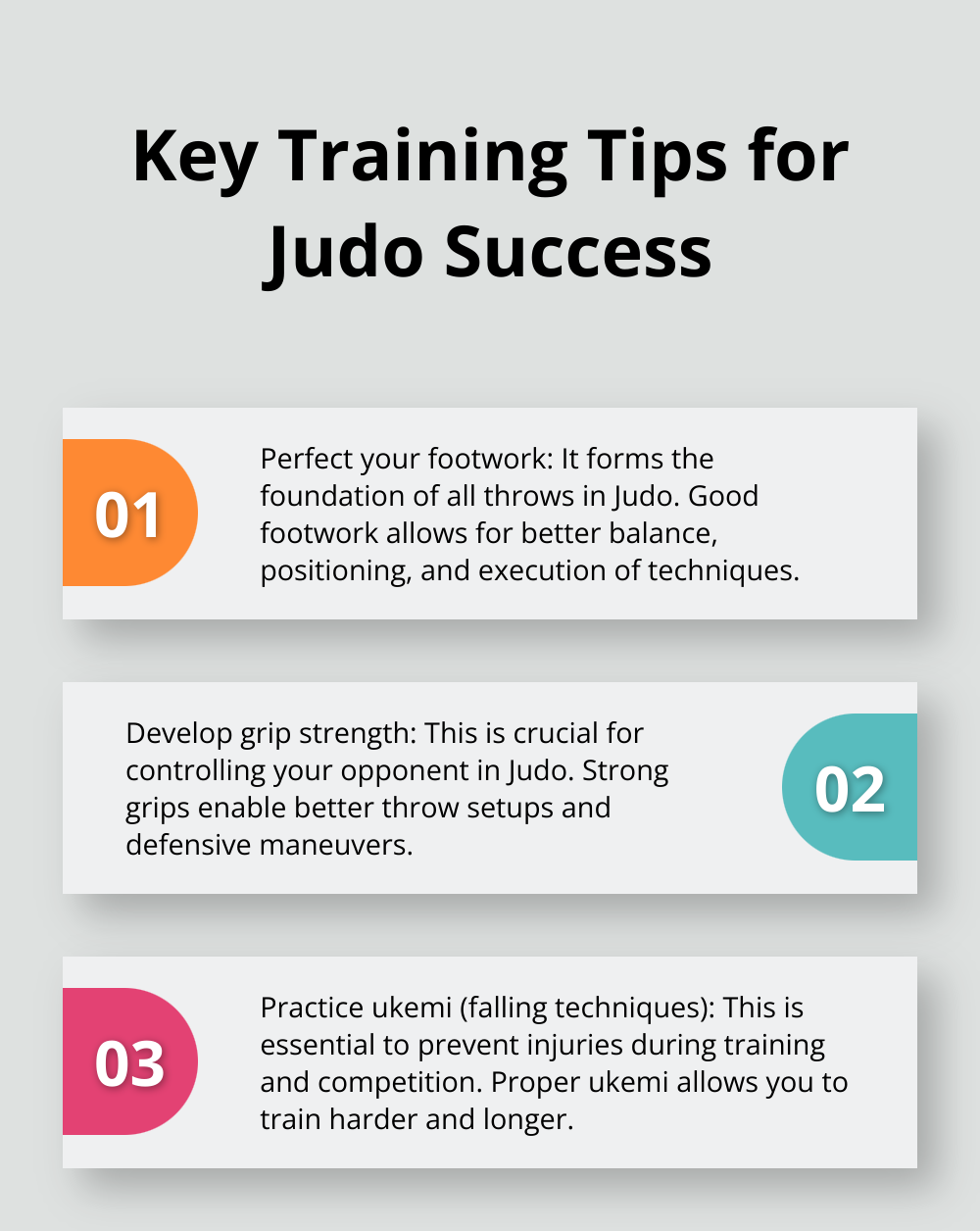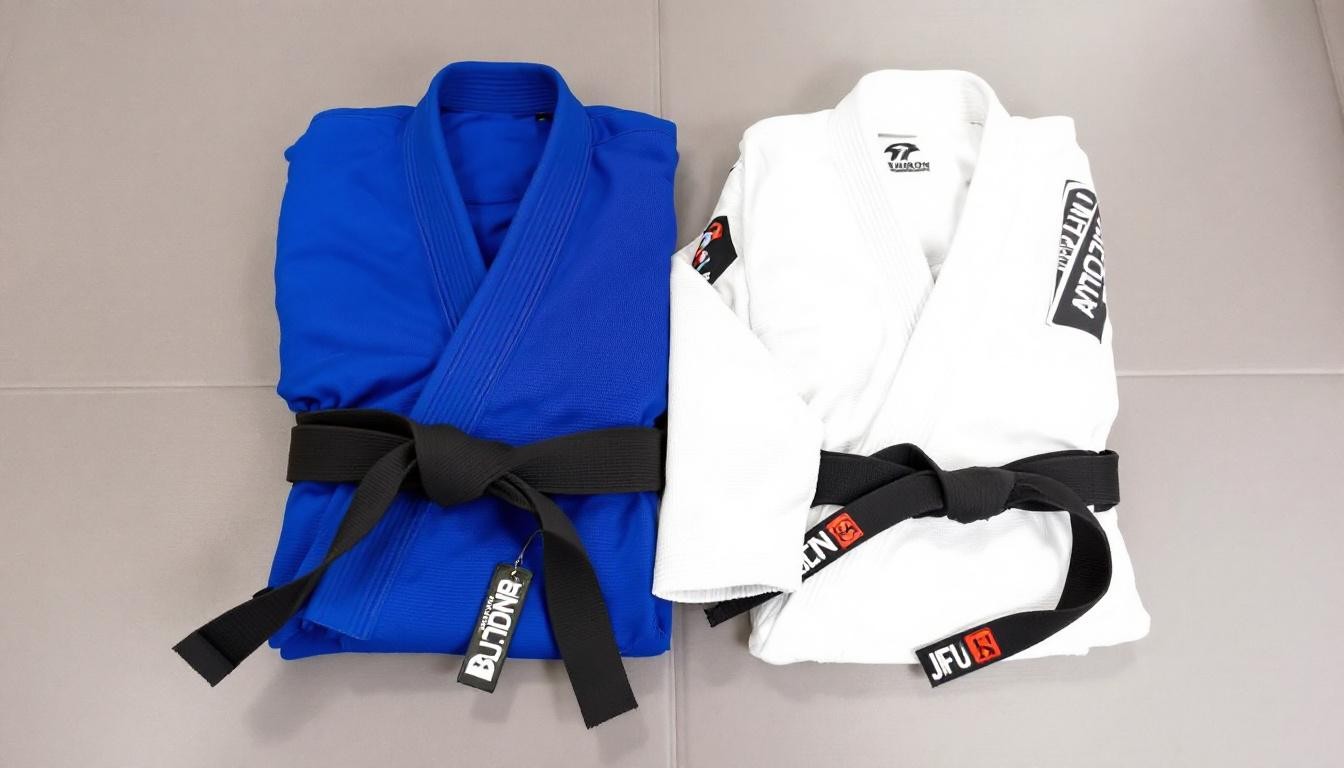At Jiu Jitsu, we often get asked about the differences between grappling styles like Jiu Jitsu vs Judo.
The world of grappling is diverse, with each style offering unique strengths and techniques. From the ground-focused Brazilian Jiu-Jitsu to the explosive takedowns of wrestling and the dynamic throws of Judo, there’s a lot to explore.
In this post, we’ll break down the key features of these popular grappling styles to help you understand which might be the best fit for your goals.
Why Brazilian Jiu-Jitsu Dominates Ground Fighting
Brazilian Jiu-Jitsu (BJJ) has revolutionized martial arts with its focus on ground fighting and submission techniques. At Souza Grappling Co., we witness how BJJ transforms practitioners’ abilities to control and submit opponents, regardless of size differences.
The Power of Leverage in BJJ
BJJ’s effectiveness stems from its use of leverage and technique. A study investigated the physiological response and technical-tactical parameters in Brazilian jiu-jitsu competition. This research highlights why BJJ stands out as a top choice for self-defense.
BJJ in MMA: A Game-Changer
In Mixed Martial Arts (MMA), BJJ proves indispensable. UFC data reveals that 47% of fights end in submission, with BJJ techniques accounting for the majority. This prevalence underscores BJJ’s practical application in combat sports.

Training Tips for BJJ Success
To excel in BJJ, focus on these key areas:
- Drill escapes relentlessly (escapes form the foundation of BJJ defense).
- Master the closed guard (it’s a versatile position for both offense and defense).
- Practice submissions from various positions (versatility is key in BJJ).
At Souza Grappling Co., we emphasize these fundamentals in our BJJ classes, ensuring students develop a solid technical base.
The Mental Game of BJJ
BJJ not only challenges the body but also sharpens the mind. Practitioners develop problem-solving skills, strategic thinking, and mental resilience. These cognitive benefits often translate to improved focus and decision-making in daily life.
BJJ for Self-Defense
The effectiveness of BJJ in real-world situations sets it apart from many other martial arts. Its techniques allow smaller individuals to defend themselves against larger attackers, making it an invaluable skill for personal safety.
As we explore other grappling styles, it’s important to consider how they compare to BJJ’s ground-fighting prowess. Let’s turn our attention to wrestling, another powerful grappling discipline with its own unique strengths.
Wrestling’s Dominance in Takedowns and Control
The Takedown Advantage
Wrestling excels in the grappling world, known for its explosive takedowns and relentless control. UFC statistics reveal that wrestlers with notable NCAA wrestling backgrounds have varying success rates in their takedown attempts. This dominance results from years of drilling techniques such as double-leg takedowns, single-leg takedowns, and clinch work.
Wrestling’s Impact on MMA
The influence of wrestling in MMA cannot be overstated. Many UFC champions boast strong wrestling backgrounds, using their grappling skills to control opponents and dictate fight pace. Khabib Nurmagomedov, with his wrestling-heavy style, retired undefeated with a 29-0 record (an impressive feat in the competitive world of MMA).

Explosive Strength and Endurance Development
Wrestling training builds both explosive strength and cardiovascular endurance. A study in the Journal of Strength and Conditioning Research found that collegiate wrestlers demonstrated significantly higher anaerobic power outputs compared to other athletes.
Key Training Focus Areas
To improve wrestling performance, athletes should concentrate on:
- Explosive lifts (power cleans and snatches)
- High-intensity interval training (HIIT) for endurance
- Drilling takedowns with resistance bands for speed and power
The Importance of Cross-Training
While wrestling offers numerous benefits, Brazilian Jiu-Jitsu remains the top choice for ground control and submissions. Cross-training in both disciplines can help develop a well-rounded skill set, combining wrestling’s takedown prowess with BJJ’s ground game mastery.
As we transition to our next section, we’ll explore another powerful grappling discipline: Judo. This Olympic sport brings its own unique strengths to the mat, blending standing throws with ground techniques in a way that complements both wrestling and BJJ.
Judo’s Unique Blend of Throws and Ground Techniques
The Art of the Throw
Judo, an Olympic sport with roots in Japanese martial arts, offers a distinctive approach to grappling. At its core, Judo combines powerful standing throws with effective ground techniques, creating a well-rounded fighting system. Judo’s throwing techniques stand as its hallmark. These moves require precise timing, balance, and an understanding of momentum.
Ground Work in Judo
While throws take center stage, Judo’s ground game demands respect. Practitioners spend about 20% of match time on the ground, applying pins, chokes, and joint locks. This aspect of Judo complements the standing techniques, creating a comprehensive grappling style. However, for those who seek to maximize their ground fighting abilities, Brazilian Jiu-Jitsu remains the top choice. BJJ’s focus on ground control and submissions provides a more comprehensive approach to this aspect of grappling.
Judo in MMA and Self-Defense
Many MMA fighters incorporate Judo techniques into their arsenal. Ronda Rousey, a former UFC champion, used her Olympic Judo background to dominate opponents. In self-defense scenarios, Judo’s emphasis on off-balancing and controlling an attacker proves invaluable. The ability to throw an attacker (and potentially end a confrontation quickly) makes Judo an attractive option for real-world self-defense.
Training Tips for Judo Success
To excel in Judo, practitioners should focus on these key areas:

The Mental Aspect of Judo
Judo not only challenges the body but also sharpens the mind. The sport requires quick thinking, adaptability, and strategic planning. These mental skills often translate to improved focus and decision-making in daily life (a benefit shared with other grappling disciplines).
Final Thoughts
Brazilian Jiu-Jitsu, wrestling, and Judo each offer unique advantages in the world of grappling. The debate of Jiu-Jitsu vs Judo highlights the strengths of both styles, but no single discipline reigns supreme in all situations. The most effective approach often involves training in multiple styles to develop a well-rounded skill set that adapts to various scenarios.
Your choice of grappling style depends on your individual goals, physical attributes, and personal preferences. Whether you focus on self-defense, competitive sports, or overall fitness, a grappling discipline exists that aligns with your objectives. Many practitioners find that exploring different styles enhances their understanding and appreciation of grappling as a whole.
For those looking to start their grappling journey or expand their skills, Souza Grappling Co. offers a comprehensive training experience. With classes in various martial arts and yoga for recovery, it provides an ideal environment to develop your abilities (in a supportive community). The most important aspect of choosing a grappling style is finding one that you enjoy and practice consistently.




